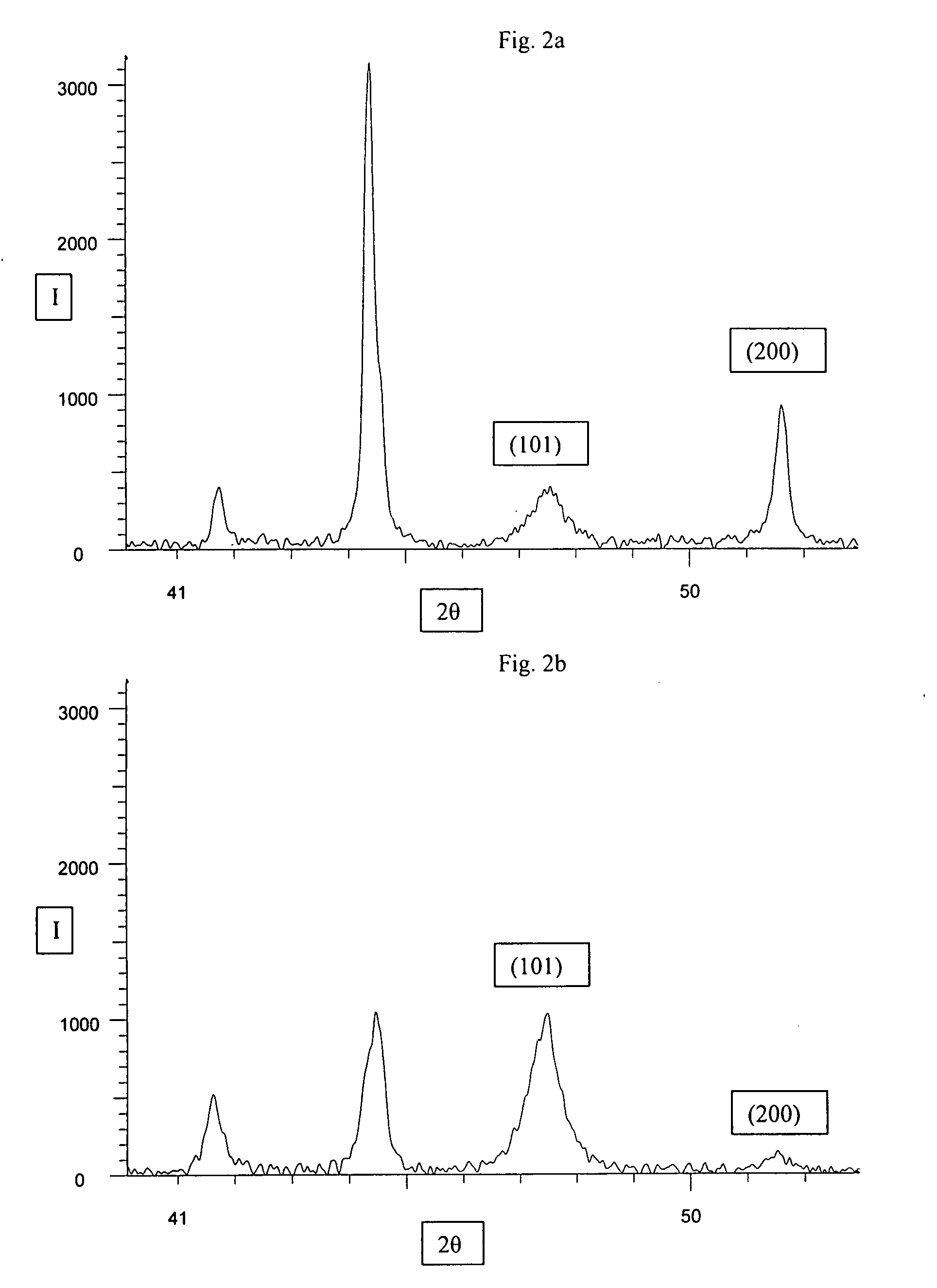Method of making a sintered body, a powder mixture and a sintered body
- Summary
- Abstract
- Description
- Claims
- Application Information
AI Technical Summary
Benefits of technology
Problems solved by technology
Method used
Image
Examples
example 1
[0049]A: A cemented carbide tool insert was produced with the composition 6.0 wt % Co, 0.23 wt % TaC, 0.16% NbC and 93.6% WC, where the cobalt raw material being an ultrafine fcc-cobalt according to the present invention with a Co-fcc(200) / Co-hcp(101) ratio of 2.12 and FSSS of 1.08 μm. The raw materials were ball milled for 25 h with 0.51 of an ethanol / water (90 / 10) mixture. The total weight of the solid materials was 1000 g. The suspension was spray dried and the granulated powder was pressed in a uniaxial press and sintered according to standard procedure.
[0050]B: A cemented carbide tool insert was produced with the same composition and the same production techniques under the same conditions as insert A, but where a commercial ultrafine cobalt with a Co-fcc(200) / Co-hcp(101) ratio of 0.08 and an FSSS of 0.7 μm was used instead of the fcc-cobalt according to the present invention.
[0051]The porosity of insert A and B was evaluated according to ISO standard 4505 (Hard Metals Metallog...
example 2
[0052]A: A cermet powder was produced with the composition 18% WC, 12% NbC, 30% TiC, 26% TiN and 14% Co, using extrafine cobalt according to the invention with a Co-fcc(200) / Co-hcp(101) ratio of 2.24 and an FSSS of 1.45 μm. The raw materials (1000 g) were ballmilled with 0.51 of an ethanol / water (90 / 10) mixture for 25 h and spray dried.
[0053]B: An equivalent powder was produced with the same composition and the same production techniques under the same conditions as powder A, but where a commercial extrafine cobalt with a Co-fcc(200) / Co-hcp(101) ratio of 0.14 and an FSSS of 1.4 μm was used instead of the fcc-cobalt.
[0054]Inserts with the geometry R245-12T3E-L were pressed of powder A and B and sintered according to standard procedure. The results can be seen in table 2 below.
TABLE 2CompactionSinteredpressure atdensityPorosityHardness18% shrinkage,(g / cm3)ISOHV3(MPa)Sample A6.56A06; B001600110Sample B6.54A08; B001550110
example 3
[0055]A: A cemented carbide powder was produced with the composition 6.0 wt % Co, 0.23 wt % TaC, 0.16% NbC and 93.6% WC, where the cobalt raw material being an ultrafine fcc-cobalt with a Co-fcc(200) / Co-hcp(101) ratio of 2.12 and an FSSS of 1.08 μm according to the present invention. The total weight of the powder materials was 28 kg. The powder materials were ball milled for 15 h and the suspension was spray dried.
[0056]B: An equivalent powder was produced with the same composition and the same production techniques under the same conditions as powder A, but where a commercial ultrafine cobalt with a Co-fcc(200) / Co-hcp(101) ratio of 0.08 and an FSSS of 0.7 μm was used instead of the fcc-cobalt.
[0057]Inserts with the geometry ZDGT200504R were pressed and then sintered according to standard procedure. The inserts made of powder B got horizontal cracks under cutting edge by pressing, while no cracks were observed on the inserts made of powder A. The results can be seen in table 3 belo...
PUM
| Property | Measurement | Unit |
|---|---|---|
| Grain size | aaaaa | aaaaa |
| Length | aaaaa | aaaaa |
| Pressure | aaaaa | aaaaa |
Abstract
Description
Claims
Application Information
 Login to View More
Login to View More - R&D
- Intellectual Property
- Life Sciences
- Materials
- Tech Scout
- Unparalleled Data Quality
- Higher Quality Content
- 60% Fewer Hallucinations
Browse by: Latest US Patents, China's latest patents, Technical Efficacy Thesaurus, Application Domain, Technology Topic, Popular Technical Reports.
© 2025 PatSnap. All rights reserved.Legal|Privacy policy|Modern Slavery Act Transparency Statement|Sitemap|About US| Contact US: help@patsnap.com


